Before starting this review, I want to thank MS Edizioni for sending us a copy of the Root, the roleplaying game. We have to thank them for the Italian localization; this manual was originally written in English by Brendan Conway and Mark Diaz Truman and produced by Magpie Games. But the first inspiration is the award-winning board game of the same name, created by Cole Wehrle and distributed by Leder Games.
In short, this RPG has a light system that allows you to experience the adventures of adorable anthropomorphic animals involved in clashes between factions in a large forest. Just keep in mind that I’m reviewing the Italian version of this product, so some terms could be different from the original.
The RPG Root, the protagonist of this review, is available on the MS Edizioni store in physical copy at a price of € 44.90; but if before paying you enter the code NoDiceUnrolled10, you will receive a 10% discount! In case you are undecided, keep in mind that on the same page you can download an interesting Quickstart for free.


The Setting: the Woods
All the adventures that can be experienced thanks to this manual are linked to the Woods. The past of these places is very uncertain, some say that once the vegetation was not so abundant and that ancient civilizations lived here; given the total absence of humans, I like to imagine that these ancient populations were (also) human. Over time the creatures of the Woods (which we will discuss later in the review) have decided to make their home safer, making the setting of Root what it still is.
These little animals then created clearings and with the felled trees they built their homes. In this way they also managed to keep wild beasts (such as bears and deer) at bay; these creatures continue to occupy the woods and can occasionally represent a threat even on the paths, that is the connections created to facilitate the transit between clearings. Some dangerous places of interest remain the caves, although the real mysteries lie elsewhere. In fact, there are various remains of past civilizations, ancient ruins full of meaning for this world.
The manual, by choice, leaves a lot of freedom to the players; in this way nothing prevents you from adding significant elements or modifying parts of this setting.
The Protagonists: the Factions
As anticipated, unlike many other RPGs, Root does not feature humans. The manual explains how the animals, divided into factions, have tried to fit into a situation made more manageable by the geological changes in the area. So the appearance of paths and clearings made the woods more accessible; the resources that could be obtained from them were coveted by many.
At first the Dynasty of the Eagles reigned, since they were already used to watching everyone from above. Then, following internal conflicts, there was a period of instability, in which public opinion was torn between the greater freedom and less security caused by the situation. The Marquise de Gattis and her Marquisate entered this scenario, invading the Woods and, thanks to the technology imported from the Sacred Feline Empire, carved out a position of power, with dynamics similar to those of the Dynasty of Eagles. These two forces are still in conflict for control of the Woods, but a third faction has decided to raise its head; the dissatisfied inhabitants have gathered under the name of the Alliance of the Woods and are fighting so that there is no longer any tyranny. Then there are the Inhabitants, those who only try to survive at best in this difficult situation.
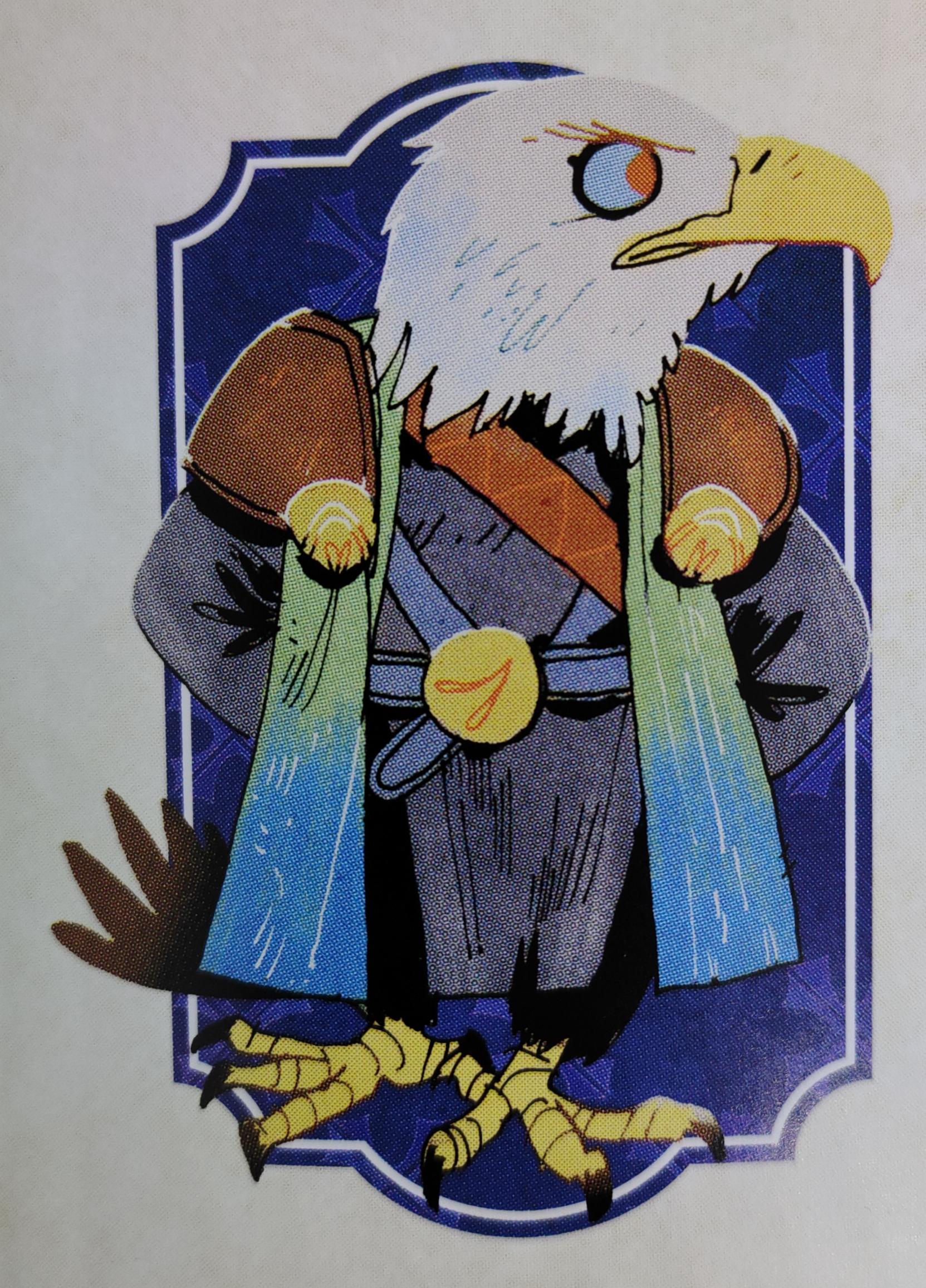
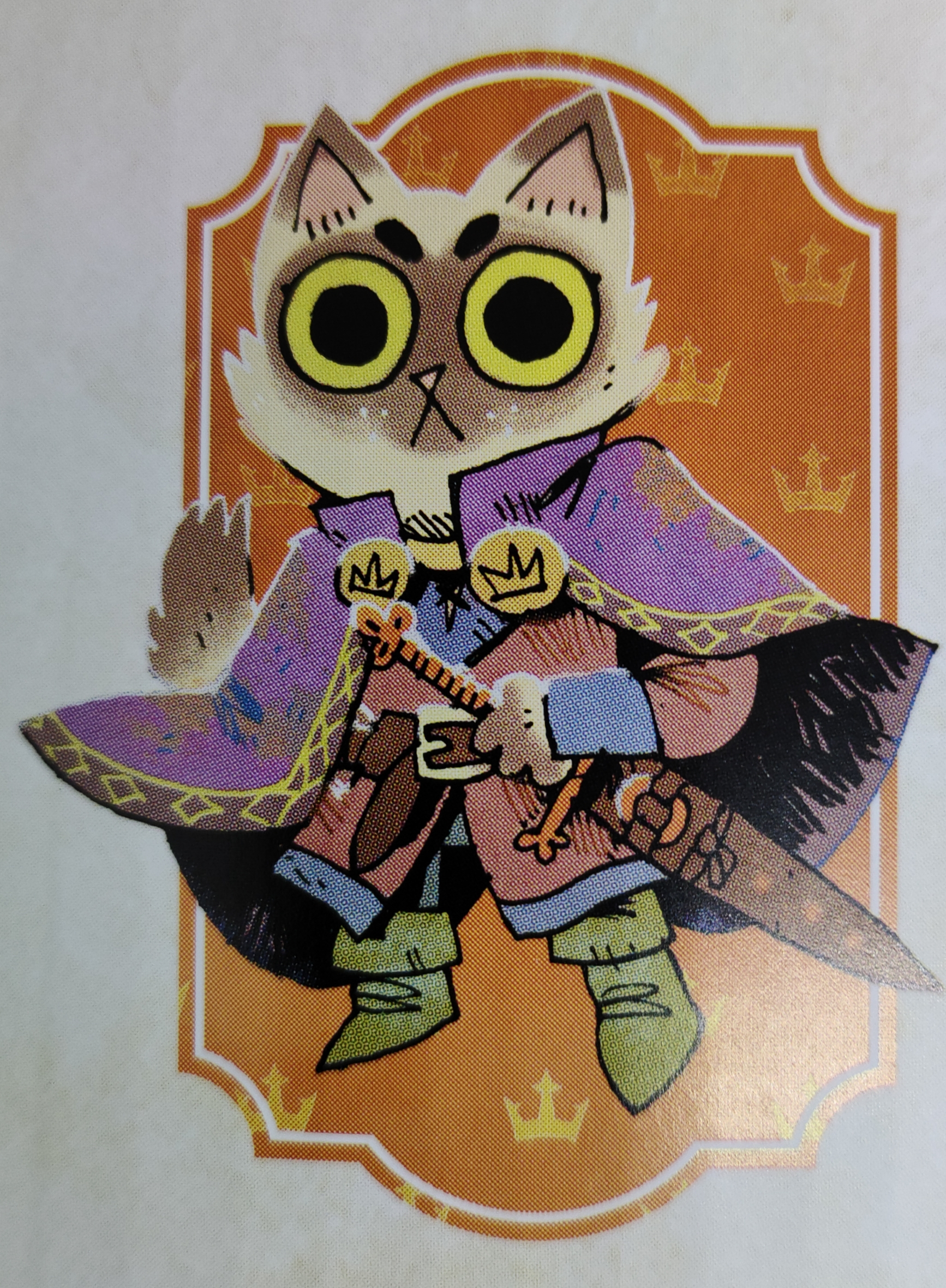


There are also figures who do not clearly belong to any faction; They call themselves Vagabonds and are intrepid travelers who offer to take on dangerous assignments. These are the characters chosen by the players. The consideration that the Factions have of the Vagabonds depends on the deeds of the characters; I appreciated this dynamic system which represents well how the decisions change the relationship between them all.
Review of the Character Building in Root
As in most RPGs, also in Root you have to create a character and with this review I will explain how to proceed.
The first step is to choose a Playbook, that is an archetype that identifies its general characteristics; there are nine available: Adventurer, Rogue, Charlatan, Judge, Thief, Master, Marauder, Ranger and Ronin. Each of them contains everything you need to easily create well-characterized characters. However, the manual allows a lot of freedom in this process and leaves open the possibility (even in the character progression phase), to get out of these tracks.
They you choose (freely or among the options proposed) various aspects of the character: Name, Species, Pronoun, Aesthetic details, information on the past, origin, drives, friends, Weapons Skills (particular fighting techniques), Roguish Feat (fields of specialization) and relationship with some Factions. The values of the initial characteristics (Cunning, Charm, Finesse, Luck and Might) are also specified on each Playbook; they can vary from -1 to 2 and one can be increased by 1 during creation, but without ever exceeding the value of 2.
To buy Equipment you have a value to spend; there are some items with predefined values, but others can be created totally customized, attributing a cost to them based on the features selected. This can grant them special abilities as well, but we’ll cover that in the next paragraph of this Root review.
The last really relevant element of each character are her Moves. You can choose three options from the six proposals and each of them allows you to characterize more characters who otherwise would have risked lacking variety; they are excellent elements to make the ruleset more playful.
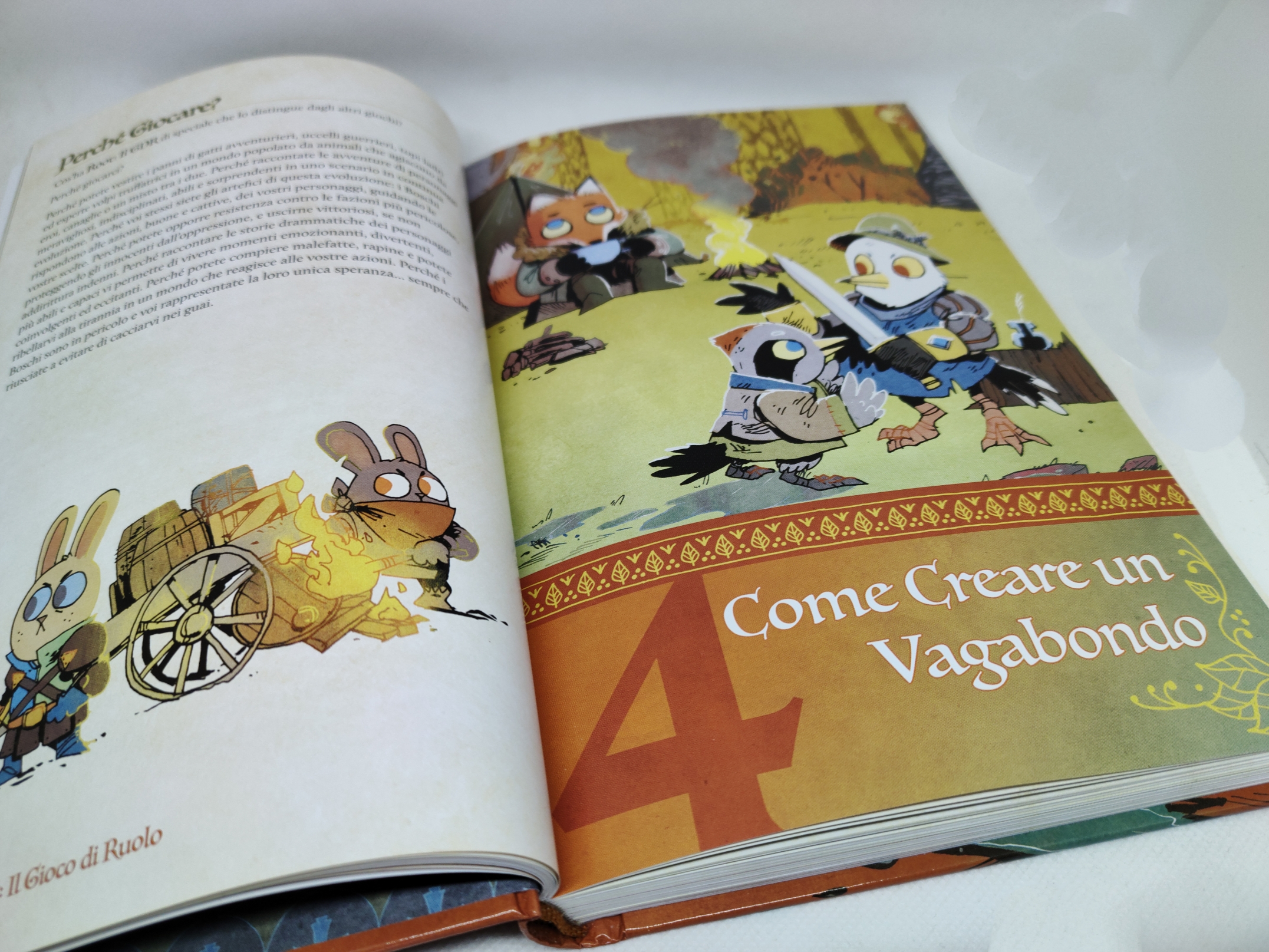
The Main Mechanics: the Moves
The tests in Root are very simple to carry out: you roll two six-sided dice and apply the modifier of the proper characteristic. A result of 6 or less indicates failure, which brings with it complications. Instead a roll of 7 or higher is a success, although there are two types; a partial success (from 7 to 9) still includes complications, while a full success (from 10 upwards) does not present any.
To this basic mechanic are added the Moves, or rules with specific consequences. There are various types, each with particular implications.
Basic Moves can be used by all characters and are the most common. The situations in which they can be used are very varied; you can help or hinder other characters, try to read a situation, convince an NPC to fulfill your request or, when there are no other solutions, you can rely on fate.
The Weapon Moves, on the other hand, obviously concern combat. Some are basic and any Vagabond can undertake them (such as attacking an enemy or fighting); others are Special Skills for which you need to have specific training and a suitable weapon. Keep in mind that each character has three tracks that represent his resources: Injury, Exhaustion and Depletion; bring them to zero never leads to anything good.
Reputation Moves can affect members of various Factions, but require a minimum Prestige or Notoriety to be used. Two examples are requesting an important meeting or precious resources.
Travel Moves regulate movement within the forest or on trails.
The End Session Moves, on the other hand, allow you to advance the characters and possibly modify them based on the evolution of events.
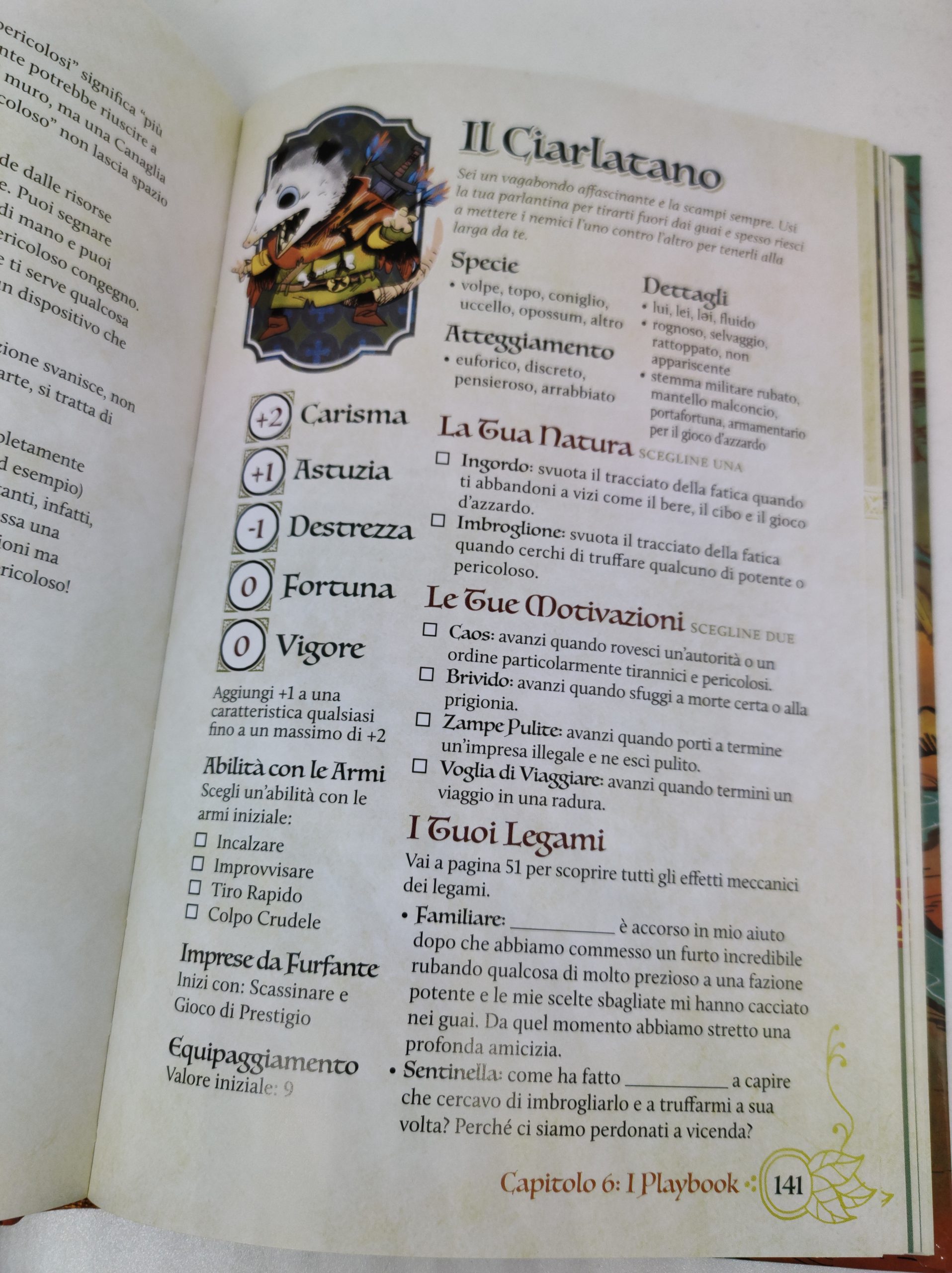
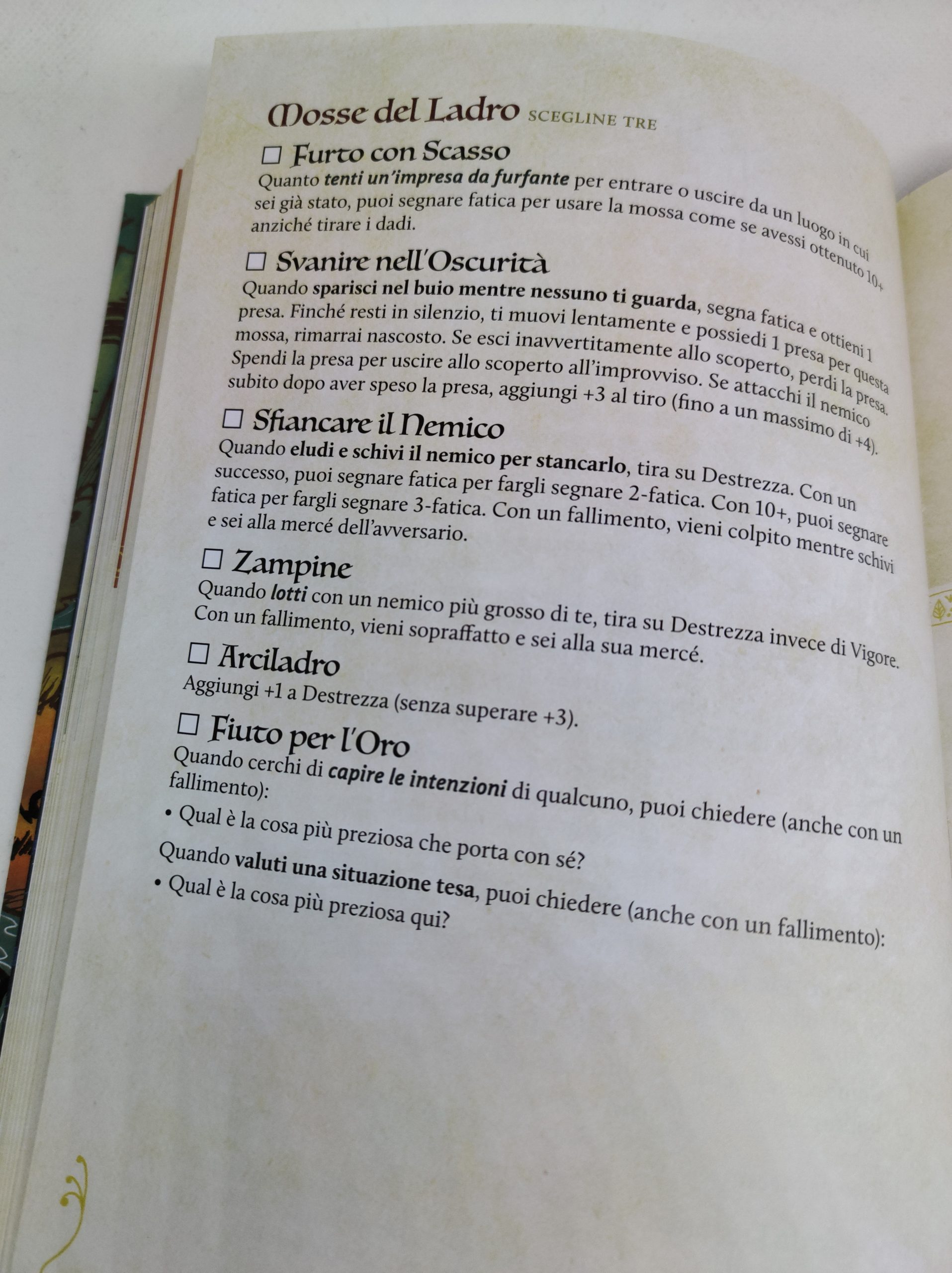
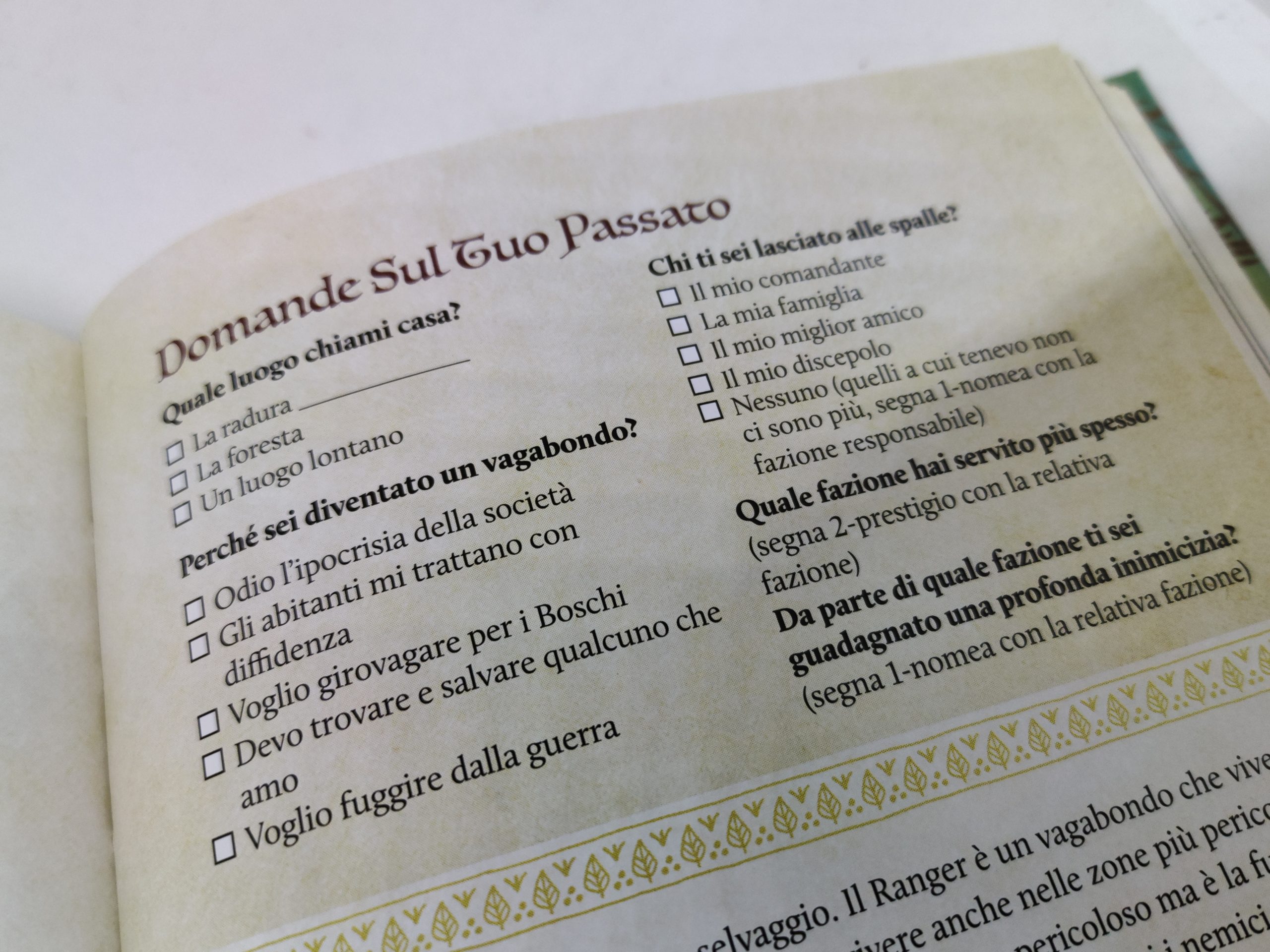

The Tools for the GM
At the end of each session, the deeds of the characters do not give them the classic “experience points”, but Advancements. Each session up to two can be obtained, one for each Drive respected. They can be immediately spent to increase stats, create new bonds, learn new Moves or Weapon Skills, or expand your tracks. A quick calculation reveals that if the two Advances were almost always achieved, a character can reach maximum development after about 12 sessions.
In addition to this task, the narrator brings the rest of the Woods to life. The manual also specifies some Principles common to many role-playing games, but always important to remember; it is specified that the GM must cheer on the Vagabonds, placing them at the center of a lively and interesting world in which each character has their own motivations. In this review of Root I have brought only a few examples, but know that the manual analyzes them one by one, making it also useful for all those who are not familiar with the role of the narrator.
It also explains how to deal with the complications of Vagabond Moves, as well as how to create NPCs and manage their actions. All this collects the decisions (and failures) of the protagonists, transforming them into ideas to make the story even more interesting.
Of the tools for the GM, however, the one I liked the most is the Woods creation system. Using random tables and dice rolls, an area with interconnected clearings and paths can be generated; thanks to other similar tools, it is then possible to determine which Factions dominate in each part of the map. This is a great way to quickly generate a realistic game world.
Gelilah’s Grove
In case you prefer to start mastering something pre-made, in this review I will now tell you about the scenario included in the manual of Root, entitled Gelilah’s Grove.
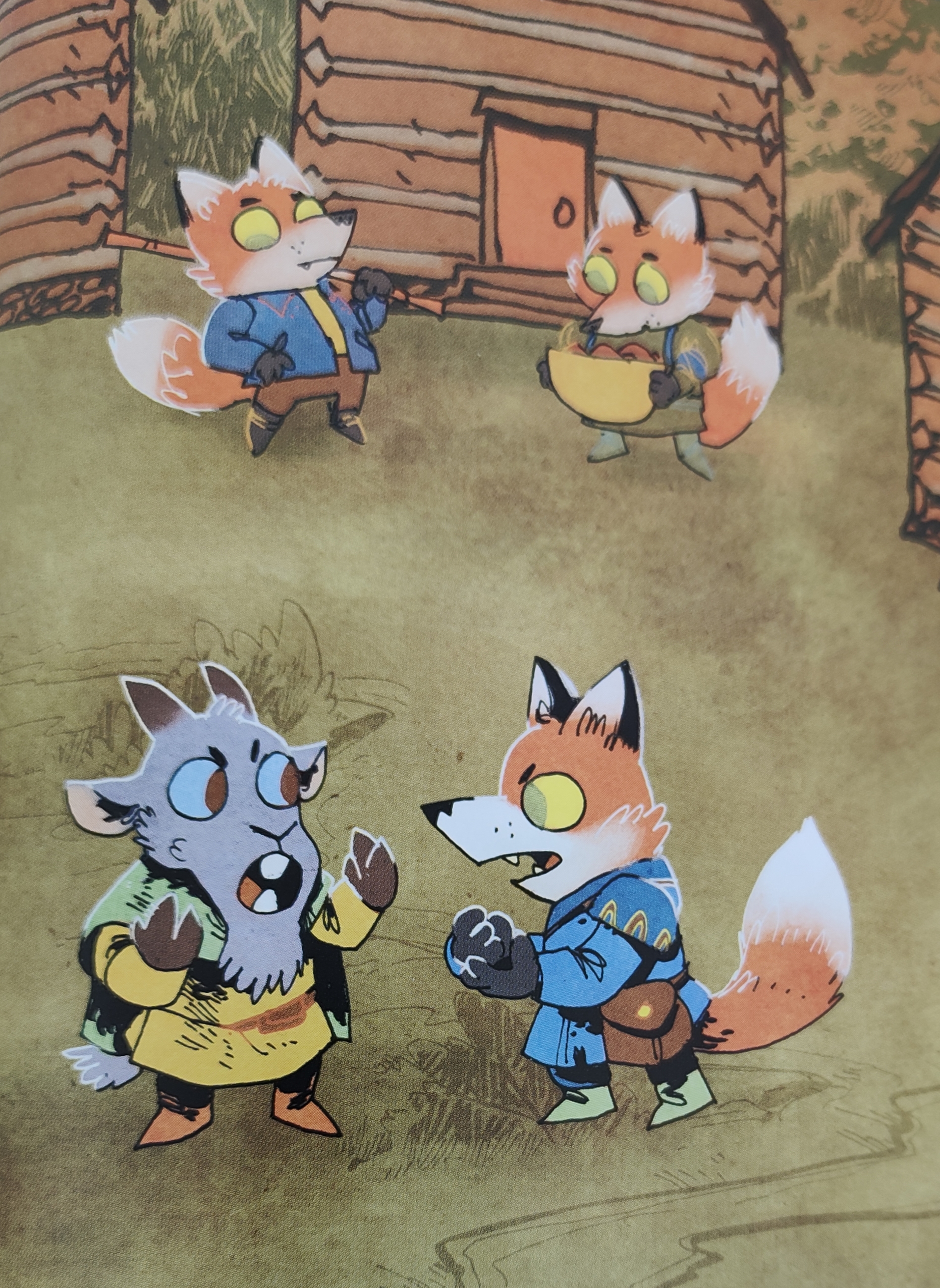
The place described is a clearing inhabited mainly by foxes, expert builders of bows and arrows. Goats also live near their community, specializing in the production of a particular liqueur, the wincorn. Foxes inadvertently flooded a river, causing problems for everyone. The dominion of the eagles over the area is weak and the Marquisate tries to take advantage of it to gain power.
As anticipated, it is only a scenario, therefore precise plots are not proposed; however, the most interesting conflicts of the area are presented. The arrival of the Marquisate is not appreciated by everyone, after all their double-dealing is evident. Someone in the Alliance does not see well the production of wincorn, which seems to distract the inhabitants of the clearing. There are also internal conflicts and, as if that were not enough, disappearances. Perhaps a well-defined plot would have helped a novice narrator more, but I admit that this scenario is very lively and full of ideas.
I also appreciated the presence of the stat blocks of all the main NPCs and the description of the most important places.
Review of the Aesthetics of Root
As can be seen from the images included in this review, the Root manual is aesthetically excellent. We are talking about a work consisting of more than 250 pages paginated in a single column and always clearly legible. The fonts are simple but functional and stand out against a very delicate parchment background. There are also some nice decorations on the underside of the pages.
The illustrations are no exception and, indeed, further embellish the work. They have a simple and cartoonish style, characterized by warm and lively colors. The characters are very expressive and funny, arousing tenderness every time you look at them.



Conclusions of the Root Review
The Root manual is full of content, very dense! Don’t be fooled by the cute little animals; the game has light mechanics, it’s true, but details abound and help create a lively and interesting world. The fights certainly play an important role, but I found the management of the relationship with the various factions even more fascinating. Even the relationships between the PCs are highlighted, with bonds that allow for unique interactions!
The attention to detail is also noticeable from other elements. In fact, the manual introduces the concept of x-card to protect players from issues that are too heavy for them. Another precaution, in my opinion, is the presence of a final glossary which, instead of explaining the terms, refers to all the pages in the which ones have been treated. I admit that I would have preferred to also see a complete character sheet, since only the Playbooks are present; in any case it is easy to overcome this problem, since on the official website of MS Edizioni there are various free contents to download, including the character sheets; scrolling down the dedicated page, it is also possible to find the clearing sheet, the Woods sheet and some precious color maps.
If you enjoyed the board game, know that the game world is the same and the references between the two products abound. I therefore conclude this review by saying that the RPG Root allows you to live (or discover) that world in a totally new and exciting way; therefore I recommend this game to anyone who wants to experience nice (but certainly not trivial) adventures in the woods, playing the role of animals with very human conflicts!


